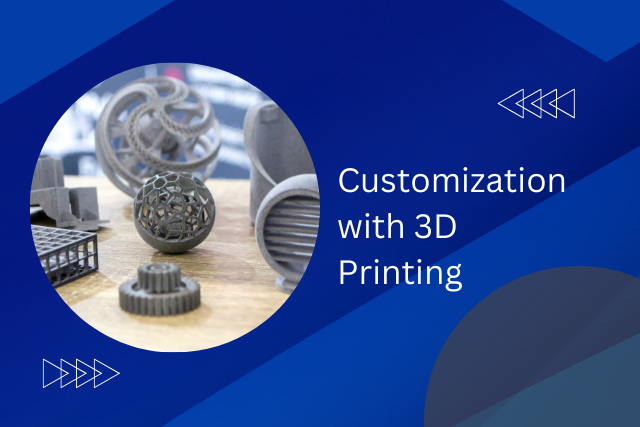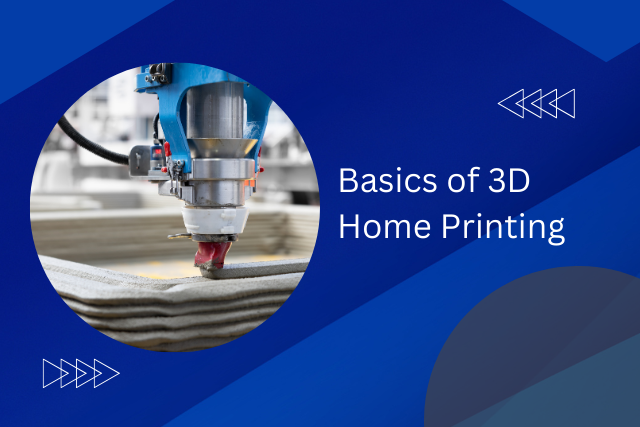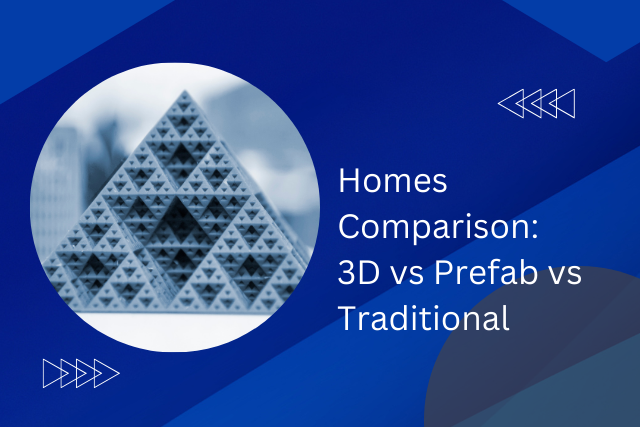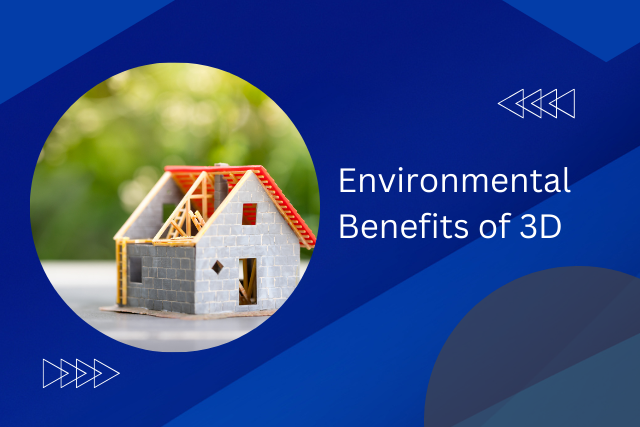3D printing is a game-changing technology in making homes that are both affordable and good for the planet. It’s making a big difference in how we think about building houses. This method cuts down on waste and helps reduce harm to the environment. It also offers a way to help solve the big problem of not having enough homes for everyone, by making building faster and cheaper.
But, using 3D printing to make homes we can live in isn’t easy. There are challenges like making sure the materials last long, getting permission from those in charge, and figuring out how to do it on a big scale. As we look into how 3D printing can help in making sustainable houses, we need to think about if these new ways can really change how we build homes, or if they will just be a small part of the bigger building world.
Understanding 3D Printing Technology
3D printing technology is a key part of modern making things, using a computer to help build up layers of material to make complicated shapes from scratch. This new way of making things, also called additive manufacturing, breaks old rules by making detailed and strong items with less waste and using less power. It’s leading a big change in how we think about, design, and make buildings and other things, mixing tech smarts with the freedom to create.
The special thing about 3D printing is how it turns digital designs into real things. It adds material layer by layer to make objects that were too hard or impossible to make before. This way, it uses materials better and lets people think up new shapes and functions that old ways of building couldn’t do.
In homes, 3D printing is a big step forward, offering a way to make housing that’s affordable and good for the planet. With this technology, people can tackle big issues by bringing together great design with care for the environment and saving money.
The Economics of 3D-Printed Homes
Investigating the money side, 3D-printed homes are a good money-saving option. They cut down on building costs and time a lot. This new way of building uses special digital methods to quickly put together homes with very little waste and not many workers needed. By using special concrete and materials, 3D printing makes strong, affordable homes possible. Studies show that 3D printing can reduce building costs by up to 40%, making it easier to solve the big problem of finding homes that people can afford.
Also, the smart technology in 3D-printed homes allows for changing the design easily without extra costs. This is great for people who want to make their homes look a certain way without spending too much. The whole process, from start to finish, doesn’t take as long, which makes this technology even more attractive money-wise.
In short, 3D-printed homes are changing the building industry, aiming to make good-quality, affordable homes available for everyone. Looking at the money side, this technology shows how new ideas can help solve big problems in society.
Environmental Benefits Explored
As we pivot to examining the environmental advantages of 3D printing in housing, it is crucial to recognize its potential in minimizing construction waste and reducing the overall carbon footprint of building projects. This technology introduces a precision in material usage that traditional construction methods cannot match, leading to significant reductions in excess materials. Furthermore, the streamlined process inherent to 3D printing contributes to lower energy consumption, setting a new standard for eco-friendly building practices.
Reducing Construction Waste
Using 3D printing in building things is really good because it helps cut down on waste a lot. This is important for making building work more environment-friendly. Usually, when people build things the old way, they end up with a lot of extra stuff they don’t use, like too much wood or metal. But with 3D printing, the machine only uses exactly what it needs. It follows a computer design very closely, so there’s hardly any stuff left over that gets thrown away.
This is great because it means less trash and is better for our planet. It also fits well with what people want nowadays – to build things without creating waste. This way of building is a big step forward in making the construction world more sustainable.
Lowering Carbon Footprint
Using 3D printing to build things helps the environment a lot. It cuts down on waste from building stuff the old way. This new way is not just good for making things faster; it also uses materials better, which means less bad air from making and moving stuff.
Here’s a simple chart to show how 3D printing is better for the planet compared to the old way of building:
| Factor | Old Way of Building | 3D Printing |
|---|---|---|
| Waste | A lot | A little |
| Using Energy | A lot | Less |
| Bad Air (CO2) | A lot | Not as much |
| Using Stuff Well | Not good | Good |
This chart shows 3D printing makes building houses better for our Earth. It creates less trash, needs less energy, makes less bad air, and uses materials in a smarter way.
Material Innovations and Sustainability
As we transition to the pivotal topic of Material Innovations and Sustainability within the realm of 3D printing for affordable housing, it’s imperative to underscore the advancements in eco-friendly building materials. These innovations not only promise to redefine the environmental footprint of construction projects but also significantly mitigate construction waste.
The strategic integration of these materials in 3D printing processes stands at the forefront of sustainable development, offering a blueprint for future housing solutions.
Eco-Friendly Building Materials
In the search for being more green, a big step forward in 3D printing is making building materials that are good for the environment. These materials are made from things that can grow again or from recycled waste. They are important because they help take care of our planet while using cool technology.
Using things like hemp, bamboo fibers, and recycled plastics in 3D printing makes building less harmful to the environment and gives people who make buildings more freedom in how they design them. This change is helping the building world become more sustainable, which means it’s better for the Earth.
By using these eco-friendly materials, the building industry is making big steps in being kinder to our planet, showing that it’s possible to build things that last without harming nature.
Reducing Construction Waste
3D printing is a smart way to cut down on waste in building projects. This technology uses materials very carefully, putting them exactly where they are needed. This means there’s much less waste, which is great for keeping things clean and efficient.
3D printing is also good because it can use recycled materials. This helps save resources and supports recycling, making it a big win for the environment. So, 3D printing is not only cool for its innovation but also helps in taking care of our planet by reducing waste in construction.
Speed and Efficiency in Construction
3D printing technology makes building things much faster and better. It changes the old way of building completely. With 3D printing, we can create buildings layer by layer. This means we can go from planning to finishing a project in days or weeks instead of months or years. This method is not just quick but also very accurate and needs fewer people to work on it. This is a big step forward in how we build things.
| Aspect | Traditional Construction | 3D Printing Construction |
|---|---|---|
| Time to Complete | Several months to years | Days to weeks |
| Labor Intensity | High | Much lower |
| Precision | Can vary | Very high |
These changes are very important. They show us a new way to build that is faster, cheaper, and better for the environment. For those who dream of a world where houses can be made quickly and easily, 3D printing in building is a very exciting development.
Architectural Design Freedom
Using the speed and power of 3D printing, this technology changes the game in how we design buildings. It opens up new possibilities for creativity and complex designs in architecture. 3D printing frees architects from the usual limits, allowing them to explore new ideas and shapes.
Traditional building methods often make it hard to try new things because they depend on making everything the same to save money. But 3D printing loves new and different designs, making it possible to create things that used to be too hard or too expensive.
With 3D printing, architects can play with complex shapes, natural designs, and unique features without worrying about extra costs. This technology is very precise, which means it can make complicated designs accurately, using less material and creating less waste.
This freedom in design starts a new chapter in architecture, where the main limit is the architect’s imagination. The changes are big, leading to buildings that are not just nicer to look at but also better suited to the needs of people and the environment around them.
Global Housing Crisis Solutions
Addressing the global housing crisis necessitates a multifaceted approach that prioritizes innovative building techniques, cost reduction strategies, and environmental impact mitigation. The integration of 3D printing technology in the construction sector presents an unprecedented opportunity to revolutionize traditional building methods, offering scalable solutions that reduce both time and material waste. This transition not only aligns with sustainable development goals but also makes strides towards making affordable housing accessible on a global scale.
Innovative Building Techniques
New ways of building homes are changing the game, especially those using cool digital tools. These methods are all about being exact and quick, bringing together the dreams of what a home can look like and the need to take care of our planet. We’re moving past old limits, leading to more creativity, usefulness, and caring for the environment.
| Technique | Advantage | Impact on Freedom |
|---|---|---|
| 3D Printing | Customization | Design without limits |
| Modular Construction | Speed | Faster move-in |
| Robotics | Precision | Better quality homes |
| Eco-friendly Materials | Sustainability | Living the good way |
These new ways make building homes faster and smarter, and they help people by giving them more choices and chances to have their own homes. It’s a big step towards letting everyone have a say in how they want to live.
Cost Reduction Strategies
Looking at ways to cut costs can help solve the big problem of not having enough affordable houses around the world. 3D printing is leading the way in making this possible by cutting down on how much it costs to build houses.
This cool method makes building faster because it uses machines controlled by computers to make sure materials are used without wasting much. This means less money is spent on workers and materials.
Also, this technology is great because it can use cheaper materials found locally, which lowers costs even more. The quick and efficient nature of 3D printing not only makes building houses faster but also makes it possible to have affordable homes everywhere, giving more people a chance to live without spending too much money.
Environmental Impact Mitigation
One big step forward in finding ways to build houses around the world is using 3D printing technology to help the environment. This new way of building changes how things are done, helping to cut down on waste, make less pollution, and use materials better. Choosing bio-based and recycled materials shows a strong commitment to keeping the planet healthy.
| Good Thing | What It Means |
|---|---|
| Less Waste | Using materials more carefully means there’s less mess during building. |
| Less Pollution | Doing things more efficiently and building closer to where the houses need to go means fewer harmful gases from cars and trucks. |
| Better Use of Materials | Planning and using resources smarter means less harm to the environment. |
| Eco-friendly Materials | Using plant-based and recycled stuff helps reuse and reduce waste. |
| Less Energy Used | 3D printing uses less power, which means it’s better for the planet. |
This table shows how 3D printing is really good for making housing more green and caring for the earth.
Case Studies: Success Stories
Several stories show how 3D printing is changing the way we make affordable and sustainable homes around the world. For example, in Eindhoven, the Netherlands, the first homes made with 3D-printed concrete were built. This effort, called Project Milestone, proves we can make strong, custom homes with much less waste and in less time. The cool thing about 3D printing is that it lets us build complex, efficient designs that are hard to do with old ways of building.
Another great story is from Mexico, where a group called New Story worked with a tech company named ICON to make the first 3D-printed community for people who don’t have much money. They used a big, movable 3D printer, the Vulcan II, to make homes that are tough, don’t cost a lot, and can be made in less than a day. This project gave homes to people who really needed them and showed how 3D printing can quickly help solve the big problem of not having enough houses.
These stories help us see how 3D printing is making big changes in building homes. It’s not only cheaper but also better for the planet. This technology helps cut down on waste, reduce harmful gases, and lets builders be more creative. It’s leading us into a new, exciting time in building, where being innovative goes hand in hand with being green.
Challenges and Limitations
3D printing is changing the way we can make affordable and green homes. But, there are some big challenges and limits we need to think about. One of the main problems is the initial cost of 3D printing technology. Even though it can save money in the long run, the start-up cost for good 3D printers and materials can be too much for many groups and governments that want to use this technology. Also, the types of materials that work with 3D printing are still limited, which can make it hard to design buildings that look good and work well in different weather and places.
Another big issue is the need for technical expertise. Operating advanced 3D printing machines needs special knowledge and skills, which means traditional building teams have a lot to learn. On top of this, the rules and laws around using 3D printing for building are not fully developed, which can cause legal problems and slow down projects. These challenges show that we need to work together, combining the efforts of innovators, law makers, and teachers, to make 3D printing a common way to create affordable, sustainable homes.
Future Outlook: What’s Next?
Looking forward, 3D printing in building affordable and sustainable housing looks very promising, even though there are some challenges now. This technology is almost ready to change how we think about, design, and build our homes. As we move on, using new materials, better engineering, and computer designs will help make 3D printing even better for making homes that don’t cost too much, are good for the environment, and are made more efficiently.
| Innovation | Impact |
|---|---|
| Advanced Materials | Lower costs, stronger buildings, and better for the environment |
| Automation | Makes building faster and reduces the need for many workers |
| Customization | Homes made to meet what different people want |
| Scalability | Makes it possible to make many homes or special designs easily |
| Policy Support | Better rules to help more people use this technology |
These improvements show a future where making affordable, sustainable homes is really happening. To get there, we need to deal with some tech, rule-making, and community challenges. But, if we keep coming up with new ideas and work together across different areas, 3D printing in housing will surely be important in making a fairer and more sustainable world.
Conclusion
In summary, 3D printing technology is changing the way we can solve the big problem of not having enough houses for everyone. It does this by being cheap, green, and quick in building houses. New materials make it even better for the environment, helping us live in a more eco-friendly way.
There are some issues, like making it work on a large scale and dealing with rules, but the good examples of 3D-printed homes we’ve seen give us hope for the future. As this technology gets better, it could really help make housing that’s both affordable and good for the planet all over the world.






